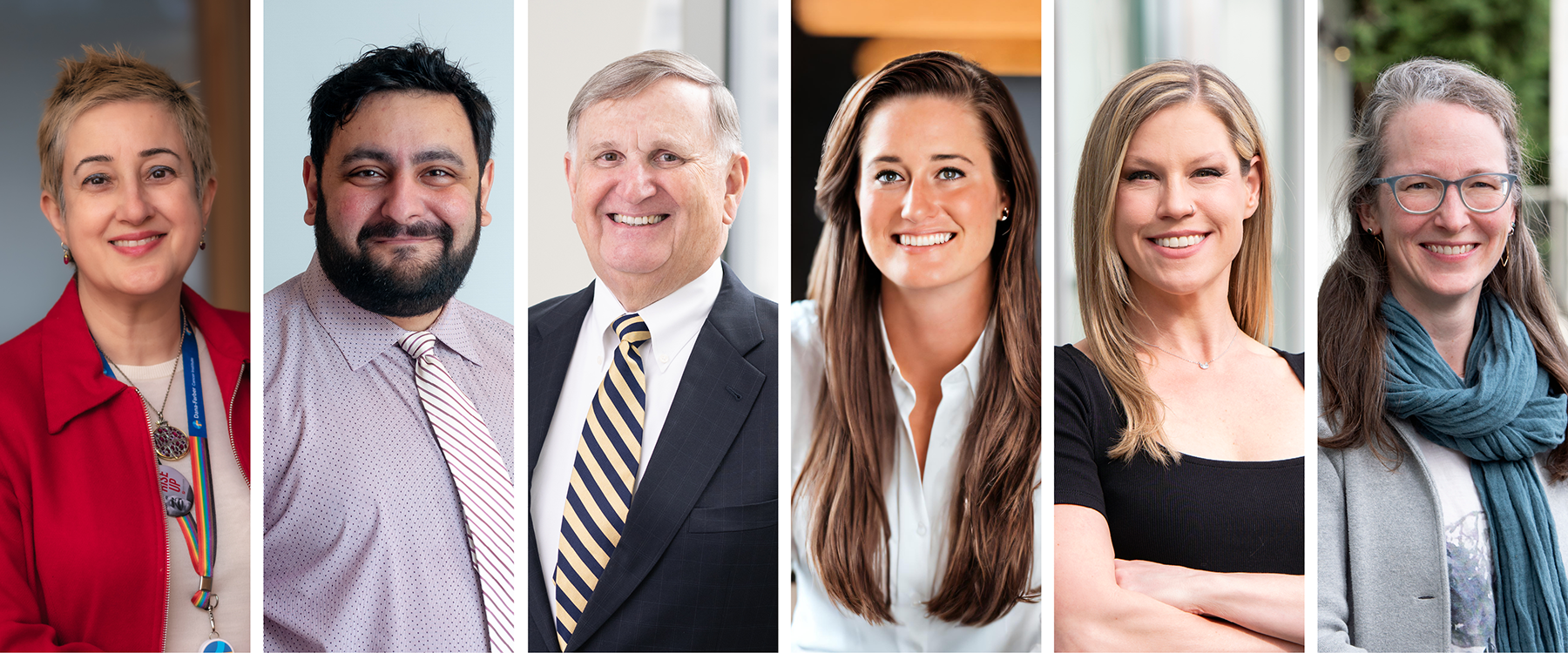The OHSU School of Medicine Alumni Association recognizes distinguished alumni whose work impacts their communities, innovates their fields and reflects OHSU’s mission to deliver health care to all.
Jump to an award
- Navid Madani, Ph.D. ’99 | Charles A. Preuss Distinguished Alumni Award
- Sharl Azar, M.D. ’10 R ’13 F ’16 | Walter C. Reynolds M.D. Community Service Award
- Wayne Burton, M.D. ’74 | Esther Pohl Lovejoy Leadership Award
- Holly Corbitt, Ph.D. ’18 | Richard T. Jones Distinguished Alumnus Scientist Award
- Abby Dotson, Ph.D. F’16 | Early Career Achievement Award
- Moira Ray, M.D. ’11 R ’15, M.P.H. ’11 | Early Career Achievement Award
Charles A. Preuss Distinguished Alumni Award
Navid Madani, Ph.D. ’99
Building bridges on her mission to fight HIV
Navid Madani marries a love of science with a devotion to outreach in the Middle East/North Africa region
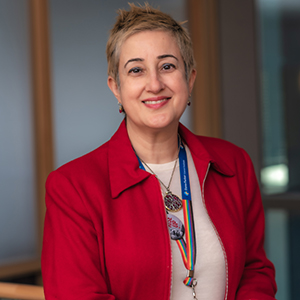
Navid Madani believes in serendipity, seeing evidence of it throughout her life. She even believes there was serendipity in her battle against stage IV ovarian cancer.
Madani is a senior scientist in the Department of Cancer Immunology and Virology at the Dana-Farber Cancer Institute (DFCI) and the founding director of the DFCI Science Health Education (SHE) Center. The SHE Center promotes best practices in medicine, scientific research and the standardization of health care among scientists, clinicians and students from the Middle East and North Africa (MENA) region, along with their counterparts in the U.S. A primary goal of the center is to support female clinicians, scientists and students in MENA countries.
“My foundation was set at OHSU.”
Navid Madani
While pursuing her Ph.D. in biochemistry and molecular biology at OHSU, Madani had a more limited worldview, maintaining a narrow focus on her work.
“To be successful in the sciences, you really have to have tunnel vision,” she says. At OHSU, Madani seldom explored the region outside of her lab. “I loved the work I was doing. It was the best five years of my life.”
Madani trained under David Kabat, Ph.D., professor emeritus of biochemistry and molecular biology. Working in Kabat’s lab, Madani detected that HIV-1’s VIF protein disables a factor inside cells that could eliminate the virus. Her work in Kabat’s lab led to the discovery of APOBEC3G, a natural virus-fighting protein in human lymphocytes. Numerous studies have since examined the VIF-APOBEC3G interaction, and efforts have been made to develop drugs targeting VIF.
Madani was pursuing postdoctoral work at DFCI in Boston when her narrow focus was shattered: The 9/11 attacks leveled New York’s Twin Towers. As an Iranian emigrant, Madani was dramatically affected.
“I’m a product of two nations — two regions, and I love both,” she says. “Sept. 11, 2001, really hurt me to the core.”
Madani questioned whether to continue her pursuit of a faculty appointment at DFCI, believing she should expand the scope of her work. She began to explore ways to promote mutual understanding among people from her home region and adopted country.
One such opportunity was presented when she and her husband accompanied a physician friend to Iran in 2003. While there, Madani was invited to deliver lectures about HIV treatments and her research. After she gave a talk to medical students in a religiously conservative city in Iran, a group of female students who had attended the lecture approached her in her hotel lobby. They asked her follow-up questions they believed they could not ask in front of their male peers and professors in the lecture hall.
Madani realized religious restrictions were severely limiting sexual education for women in the Middle East. “There is a thirst, a longing for knowledge,” she says.
From 2003 to 2008, Madani continued her research on HIV-1 transmission at DFCI while making regular trips to Iran in support of clinicians and students. She included basic sexual health education in her talks about HIV, drawing the attention of some Iranian government officials.
Madani brought worldwide focus to the region at the 2010 International AIDS Society Conference in Vienna. She ran a session on the lack of HIV and reproductive information available in the Middle East and its negative effect on women. She also persuaded Anthony Fauci, M.D., former director of the National Institute of Allergy and Infectious Diseases, to deliver the keynote address. Later, she organized the first International Conference on HIV/AIDS in Iran in collaboration with UNAIDS and Tehran University of Medical Sciences.
In 2016, leadership at DCFI recognized Madani’s personal devotion to outreach in the MENA region by inviting her to create a center in support of her work. In 2019, the DCFI SHE Center was launched. At the same time, Madani was diagnosed with stage IV ovarian cancer.
“I was scared, but I felt like, it’s going to be OK,” she says. “Now I know what cancer patients go through. I can talk to them about it. I can talk to scientists about improving cancer drugs. I can talk to physicians.”
In fact, mentorship of clinicians and students is one of her center’s goals. Madani says she channels her mentoring skills from the time she spent working in David Kabat’s lab. “My foundation was set at OHSU.”
Praising her work in MENA countries, Kabat says, “Dr. Madani has a perfect combination of knowledge, skill, background and institutional support to facilitate this critically important humanitarian effort.”
Walter C. Reynolds M.D. Community Service Award
Sharl Azar, M.D. ’10 R ’13 F ’16
Earning patient trust while working toward a cure
Sharl Azar builds a comprehensive center for patients of sickle cell disease
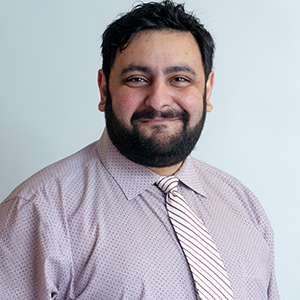
Sharl Azar, founder and director of the Massachusetts General Hospital (MGH) Comprehensive Sickle Cell Disease Treatment Center, recognizes the societal challenges his patients face.
“The thing I kept hearing was, ‘Mass General is the old white man’s hospital. Nobody there looks like me,’” Azar says. “I began to delve into understanding the lives of our patients and realized there was a social justice and advocacy component to this work, which is something that was born and bred into me in my training at OHSU.”
Azar believes the research and treatment of sickle cell disease (SCD) has historically been limited because the disease primarily affects people of color: The U.S. Black population makes up 90% of the nearly 100,000 SCD patients in this country. In SCD patients, the sickled red blood cells the disease is named for block blood flow, which can prevent organs from receiving oxygen and cause vaso-occlusive crisis (VOC), or pain crisis. Many of Azar’s patients will have a heart attack in their 20s or undergo joint replacement in their 30s, and 25% will suffer a stroke before age 45, the age when many will die.
“I built this model here based on the way I saw care provided at OHSU. I deeply appreciate the incredible mentors I had.”
Sharl Azar
Most SCD patients suffer devastating pain and visit hospital emergency departments to request drugs in search of relief. “They are called drug seekers — malingerers. They’re told to go get their fix somewhere else,” Azar says.
When the MGH Center opened, Azar says, “We knew that trust was something we needed to earn.” He and his team left the primarily white Beacon Hill neighborhood around the center to visit Boston’s communities of color. They raised awareness about SCD and participated in neighborhood health fairs. Azar became a political advocate, drafting a bill and — with a local representative — introducing it before the Massachusetts state legislature. If passed, it will expand resources for SCD statewide.
The MGH Center served 24 patients when it opened in 2020; today, the center cares for 223. Patients are seen by hematology and primary care specialists, with access to a subspeciality network that includes nephrology, ophthalmology, pulmonology and OB/GYN. Additional support is provided by a dedicated SCD social worker, two nurse navigators and a patient coordinator. By establishing partnerships with palliative care, integrative medicine and spiritual care, Azar has formed a comprehensive pain and suffering management team for his patients. The center was the first in Massachusetts to offer the new transformative FDA-approved sickle cell gene therapy. Encouraged by the current trend toward increased research and awareness of SCD, Azar believes he will see a cure in his lifetime.
“My hope is that our center will serve as a model across the whole country,” Azar says. “I built this model here based on the way I saw care provided at OHSU. I deeply appreciate the incredible mentors I had. Every aspect of my training at OHSU was a key component of who I am today.”
Esther Pohl Lovejoy Leadership Award
Wayne Burton, M.D. ’74
An innovator in occupational medicine looks back
Wayne Burton widened the scope of employee wellness
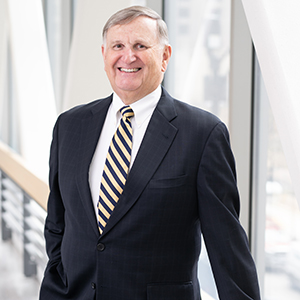
All through his medical training, Wayne Burton had planned to become a small-town internist until, during his residency in Chicago, he took a chance to go in a different direction.
“I barely even knew what occupational medicine was,” he says. “The little I knew was that most doctors in the field were probably in the twilight of their careers.”
Burton can reflect with pride on over 40 years as a nationally recognized innovator and longstanding leader in today’s well-established field of occupational medicine.
Beginning his career with International Harvester’s headquarters in Chicago, Burton took on various executive roles, including corporate medical director, with the First National Bank of Chicago, which later became Bank One and JPMorgan Chase. When a brief retirement didn’t pan out — “I traveled a week, played golf a week, then my wife told me to go get a job,” he jokes — he worked as chief medical officer at American Express before retiring in 2017.
“I’ve been very fortunate to have a career that combined clinical medicine, population health management and research.”
Wayne Burton
Burton helped to develop occupational medicine into the burgeoning field it is today. When he started out in his career, occupational medicine was focused on workplace-related injuries and illnesses. In his many years at the bank, he oversaw an expansion of employee health services from a single clinic to 30 locations, serving hundreds of thousands of employees worldwide.
Most significantly, he recognized that the bank’s white-collar workers rarely suffered injuries worse than a paper cut and widened the scope of “employee wellness.” He was an innovator, launching initiatives related to preventive care and screenings, women’s health and mental health. He was in the vanguard of addressing issues such as HIV and AIDS in the workplace. Thanks to these efforts, employees were able to access a range of services onsite, from taking prenatal health classes to getting routine mammograms and seeing mental health counselors.
Burton also helped modernize the occupational medicine field by employing technology to track employee health and well-being, contributing to a more holistic approach to health care. That work resonated with his data-focused corporate employers, who were able to see that supporting employee health resulted in improved productivity and controlled health care costs.
And if all that wasn’t enough to keep him busy, Burton also published widely in journals, taught at institutions including Northwestern University’s Feinberg School of Medicine and the University of Illinois School of Public Health. And he was seeing patients the whole time.
“I’ve been very fortunate to have a career that combined clinical medicine, population health management and research,” he says. Since retiring, Burton has stayed busy consulting, writing, teaching, speaking at conferences and serving on various boards.
Even if he didn’t realize it at the time, his student days at OHSU prepared him for his eventual career in occupational medicine. “In this work, you have to be a people person,” he says. “As a medical student doing regular rotations, you have to learn to work with a variety of people in a variety of settings — an experience that turned out to be exceedingly valuable in my career.”
Richard T. Jones Distinguished Alumnus Scientist Award
Holly Corbitt, Ph.D. ’18
Making the jump from academia to industry
Holly Corbitt isn’t afraid to take risks and push ahead in her career
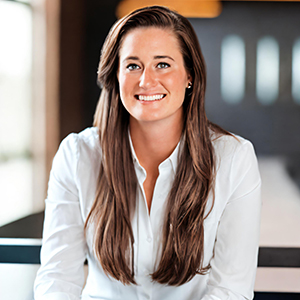
As a high schooler, Holly Corbitt moved from Mississippi to Oregon to pursue an interest in snowboarding. Becoming a professional snowboarder didn’t wind up working out, but her time in Oregon’s great outdoors made her fall deeply in love with nature and science.
“There have been so many stepping stones between then and now,” she says. “I’ve always believed in taking risks and being a bit more daring in my life choices, to follow my dreams.”
Now a senior manager with Twist Bioscience, she oversees a bioinformatics applications team developing sustainable synthetic DNA tools used in a range of industries, from medicine to agriculture.
“I want to keep evolving with the science — computers and science are really the lynchpin to everything that’s moving forward in the future.”
Holly Corbitt
Corbitt attended Mt. Hood Community College and then studied molecular biology and microbiology at Portland State University before entering the OHSU School of Medicine as a doctoral student in molecular and medical genetics. She worked in the lab of Cheryl Maslen, Ph.D., now professor emerita, studying genetic risk factors related to pediatric heart defects and diseases, a role that offered an opportunity to fulfill her interest in both medicine and science. “The best of both worlds,” she says.
“I liked doing the hardcore science as well working with pediatricians,” she adds. “You always knew the work you were doing was going to directly impact patients. It was very motivating.”
Corbitt’s research interests eventually led her in a new direction: “I knew almost nothing about bioinformatics and had no background in computer science, but it was what I wanted to learn.”
Maslen trusted her to take on the challenge and was amazed by the rapid results. In her award nomination letter Maslen wrote, “To my great delight, Holly was way ahead of me, balancing her bench work with developing computational models and pipelines to analyze that data. Her skills and hard work brought us the highest quality results possible for these projects.”
“I got so much unwavering support and validation,” Corbitt says. “I was given the time to learn this new thing, and not everyone would’ve given me that chance. That’s how Cheryl worked with students — it wasn’t just doing the science; it was also about developing their careers.”
After earning her Ph.D., Corbitt immediately made the jump from academia to industry, joining biotech giant Illumina. After a year, she made the move to the much smaller Twist Bioscience where she brings to her work the same collaborative, can-do zest that also drove her in sports and in her studies.
“I like having a broad focus,” she says. “Our technology applies to so many things — I’ll be talking one day to a dolphin scientist about their research, and the next day I’ll talk to an oncologist.”
Corbitt may have a bright future, but she is canny enough not to put much stock in long-term goal-setting. “The things I’m working on right now aren’t where science is going to be in another decade,” she says. “I want to keep evolving with the science — computers and science are really the lynchpin to everything that’s moving forward in the future. All I know is I always want to stay learning.”
Early Career Achievement Award
Abby Dotson, Ph.D. F’16
A voice for patient empowerment goes nationwide
Abby Dotson loves being at the intersection of science, technology and public policy
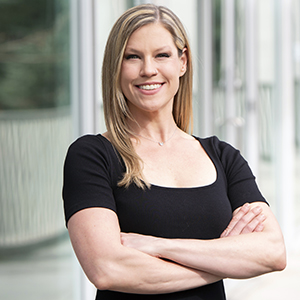
Abby Dotson has rapidly emerged as a national leader in developing innovative ways to connect emergency health care providers with patients’ treatment choices when facing serious illness.
She says, “I’m passionate about using data to drive health care policy and education.”
A research assistant professor of emergency medicine in the OHSU School of Medicine, she also serves as director of the Oregon Portable Orders for Life-Sustaining Treatment (POLST) Registry. Last year, she became executive director of the National POLST Collaborative, advising and training states in best practices.
Her career philosophy is straightforward: “I’ve always made choices based on what feels like a good fit for my skills and what is important to me in terms of adding value to society.”
“Everything we’re doing is patient-centered, giving patients and their families more autonomy.”
Abby Dotson
Dotson grew up dreaming of becoming a scientist. After earning a Ph.D. in microbiology from the University of Kansas, she moved to Portland in 2013 to be a postdoctoral fellow working in neuroimmunology at OHSU. She enjoyed lab research, but chose to pursue a career with a more direct “human connection” as she says. “I wanted to have an impact on my community.”
She spent two years with OHSU’s Technology Transfer Office, which supports commercialization of research ideas and innovations. That, she says, sparked her interest in digital technology and health care: “I love being at the intersection of science, technology and public policy.”
In 2018, Dotson moved on to become director of Oregon’s POLST technology initiative, which enables medically fragile and seriously ill patients to register their medical orders for end-of-life care in a statewide database. The information is considered “portable” because it is accessible wherever patients go for treatment, whether it’s a doctor’s office or a hospital emergency room.
POLST originated in Oregon in the 1990s, and the registry — considered a national model — was created in 2009 so emergency medical services could access patient information when a paper form could not be found.
“Essentially, we’re connecting palliative care and emergency medical treatment,” she says. “For the medical community, POLST helps guide quick decisions in an emergency. For patients, making decisions about serious-illness care can be very intimidating and isn’t always straightforward. Everything we’re doing is patient-centered, giving patients and their families more autonomy.”
In addition to working in Oregon, Dotson conducts research related to POLST usage and its outcomes and has advised states from California to Massachusetts on implementing or improving their own registries. Getting those opportunities to meet with patients and providers has reinforced her own commitment to spreading the word and establishing best practices across the country.
She has also taken on a leadership role in developing Oregon’s Health Emergency Ready Oregon (HERO) Kids Registry, the nation’s first statewide medical registry for children with special health care needs.
“I’ve come to realize this is a space that needs champions and advocates,” she says. “In Oregon, we’ve gained so much experience and expertise. Getting to use the lessons we’ve learned here to help different communities is incredibly rewarding — the best part of the job.”
Early Career Achievement Award
Moira Ray, M.D. ’11 R ’15, M.P.H. ’11
‘You just need to QI it’
Moira Ray creates quality improvement systems for better patient care
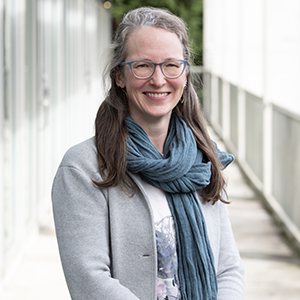
Throughout her career, Moira Ray has pursued two passions: direct patient care and public health.
“I’ve always liked thinking about the needs of the public versus the needs of the individual,” Ray says. “I’m a physician working in a patient-centered area, and I also work at population levels to think about quality improvement initiatives.”
When Ray was first introduced to a quality improvement (QI) curriculum as a graduate student, she thought she had no time for what felt like extra work heaped upon the already full physician workload. She credits Sherril Gelmon, Dr.P.H., a mentor and Portland State University public health professor with helping her to embrace improvement science.
Recently named the associate director of quality for the school’s Department of Family Medicine, Ray sees the QI mindset as an optimistic one. She quotes her fellow alumna, Katie Putman, M.D. ’17, M.P.H. ’17, “‘If you hate something, you should improve it. You just need to QI it.’”
“A huge part of my QI job was helping people do the right thing and making the right thing be the easy thing to do.”
Moira Ray
Ray began working at OHSU after completing residencies in family practice and preventive medicine. Within the family medicine department, she sees a variety of patients including children, adults and those seeking maternity care and women’s health and reproductive services. She has also worked as a clinical epidemiologist at the OHSU Center for Evidence-based Policy, completing evidence reviews for a collaborative of 25 state Medicaid agencies and programs.
At the Center for Evidence-based Policy, Ray worked on the Medicaid Evidence-based Decisions (MED) Project, funded by Oregon and several other participating state Medicaid programs. The MED project gathered and evaluated evidence for making Medicaid coverage decisions, impacting millions of patients each year. She has authored numerous policy reviews, evaluating evidence that informs how healthcare delivery and payment decisions are made throughout the U.S.
When Ray saw an opportunity to improve patient care in her clinic, she completed training and certification in loop electrosurgical excision procedure (LEEP) in order to treat precancerous cervical disease in her patients. She then established a program to provide LEEP in her clinic and began to train residents in the procedure.
As the QI lead for her clinic, Ray helped develop a system leading to better patient health outcomes for individuals with diabetes by creating a review committee where team members could present patient needs and get valuable feedback from an interprofessional group.
“People learned from being looped in with other teammates,” Rays says. “A huge part of my QI job was helping people do the right thing and making the right thing be the easy thing to do.”
Many of Ray’s fellow clinicians are also OHSU alumni, including some of her classmates. “There’s something about that shared experience. I lean on my friends from med school.”
She enjoys working with residents and is glad to be a member of the next generation of instructors at OHSU. “I love giving back to help learners — giving back to support what people gave me when I was a student here.”
